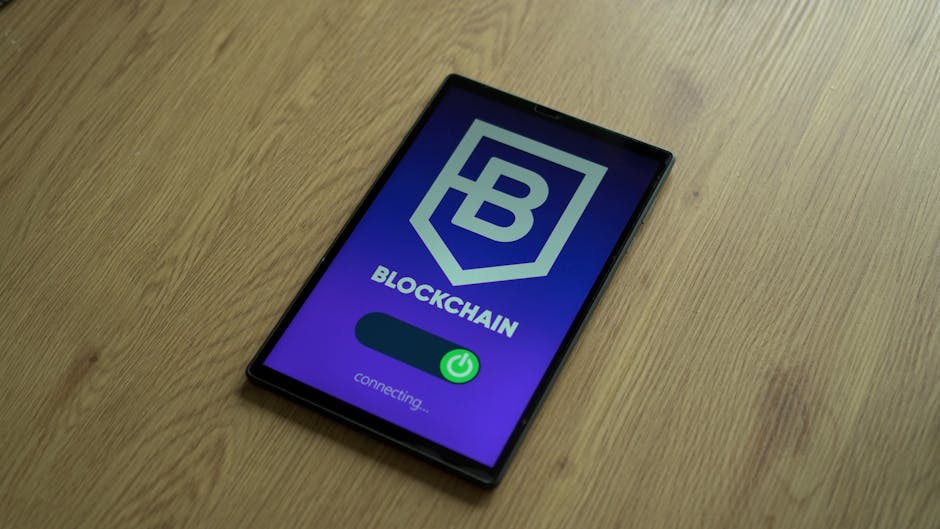Why Crypto Deserves Your Attention
Cryptocurrency has evolved from a novel tech concept into one of the most watched sectors in finance and technology. If you’re new to the space, understanding where it all began—and where it’s headed—can help you see why now is still a timely and strategic moment to get started.
A Quick Look Back: The Origins of Crypto
- Bitcoin launched in 2009, introducing a decentralized alternative to traditional money.
- It wasn’t just about currency—it was a proof of concept for peer-to-peer transactions without banks or middlemen.
- The success of Bitcoin paved the way for thousands of new digital currencies and blockchain-based projects.
Beyond Bitcoin: The Growth of Practical Use Cases
Crypto is no longer just something traders speculate on. Its real-world applications are rapidly expanding:
- Cross-border payments without excessive fees or delays
- Tokenized assets (real estate, art, shares) traded digitally
- Decentralized finance (DeFi) platforms offering loans, savings, and yield services
- NFTs powering digital ownership, identity, and creative monetization
- Cryptocurrencies used for remittances and donations in underbanked regions
The ecosystem now includes blockchains optimized for speed, privacy, or smart contracts—each solving a different real-world problem.
Why It’s Still a Good Time to Start
You haven’t missed the boat—far from it. The crypto space is still evolving, and entry points have never been more accessible. Here’s why it’s still worth getting involved:
- Infrastructure is improving: Better wallets, exchanges, and tools make it easier and safer to get started
- Education is widespread: There’s more high-quality, beginner-friendly content than ever before
- The next wave of development is focusing on utility, making crypto more integrated with daily life
Whether you’re interested in investing, building, or simply learning, 2024 is a strong entry point.
Crypto is shifting from hype to utility. The real opportunities lie with those who start now and grow alongside the space.
Understanding the Basics
So—what exactly is cryptocurrency? At the simplest level, it’s digital money that isn’t controlled by a government or bank. Instead of paperwork and middlemen, it runs on code and consensus. You send it, receive it, and store it all online. Popular examples include Bitcoin and Ethereum, but there are thousands out there.
Behind this digital cash is a technology called blockchain. Think of it as a shared public ledger—once you write something in it, it can’t be changed. Every transaction is stamped, time-logged, and transparent. That’s how trust and security work without needing a trusted third party.
Now, let’s break down coins vs. tokens. A coin, like Bitcoin or Litecoin, runs on its own native blockchain. A token, like Chainlink or Uniswap, lives on top of another blockchain (often Ethereum). Both can be traded or used, but the tech under the hood differs.
Keeping up? Good. Here are a few key terms you’ll hear often:
- Wallets: These are your bank accounts in crypto. Some are physical (hardware wallets), others digital (software apps). They store your private keys—basically, the passwords to your money.
- Mining: A method of securing the blockchain by solving math problems. Mainly tied to coins like Bitcoin. Miners get rewarded in cryptocurrency.
- Gas Fees: The cost of doing business on a blockchain. Usually, it’s what you pay to send a token or run a smart contract, and these fees can vary wildly.
It’s a strange new world—but breaking it down to basics makes it a lot more manageable.
Setting Up: What You Actually Need
Starting your crypto journey doesn’t require a huge investment or advanced tech skills—but it does require getting a few things right from the beginning. Here’s what you’ll need (and why it matters) before making your first purchase.
Choosing a Secure Wallet
A wallet is where you store your cryptocurrency. Choosing the right one depends on your comfort level, security needs, and how often you plan to access your assets.
Types of wallets:
- Hardware wallets (e.g., Ledger, Trezor)
- Best for long-term storage and high security
- Offline, making them resistant to hacks
- Software wallets (e.g., MetaMask, Trust Wallet)
- App-based, ideal for frequent or mobile use
- Easier to access but must be well protected
- Custodial wallets (e.g., on centralized exchanges like Coinbase)
- Easy to use; someone else holds your keys
- Less control, but smoother for beginners
Tip: If you don’t own your private keys, you don’t fully own your crypto.
Picking an Exchange Without Getting Burned
Your exchange is your entry point into crypto, so choosing a reputable platform is non-negotiable.
Questions to ask before signing up:
- Is the exchange well-known and regulated?
- Does it have strong security measures?
- How intuitive is its user interface?
- What are the fees for trading and withdrawals?
Popular beginner-friendly exchanges:
- Coinbase
- Binance
- Kraken
- Gemini
Do some research and read reviews before committing—there are dozens out there, but not all are trustworthy.
KYC and Verification: What to Expect
Most reputable platforms will require you to complete a KYC (Know Your Customer) process. It’s standard for financial compliance.
Be prepared to provide:
- A government-issued ID
- A selfie or webcam verification
- Proof of residence (like a utility bill in some cases)
This process may feel invasive, but it helps prevent fraud and money laundering—and unlocks full access to the platform’s features.
Starting Small: Buy Your First $50 of Crypto Safely
You don’t need to go all in to get started. In fact, dipping your toes in with a small amount is a solid way to learn the ropes.
A simple starting strategy:
- Fund your exchange account using a bank transfer or card
- Choose a stable and well-known cryptocurrency (e.g., Bitcoin or Ethereum)
- Start with a low amount—$50 or even less is fine
- Store it securely in your chosen wallet
Tip: Resist the urge to FOMO into trending coins. Learn the process and the platform first.
Getting set up is more about smart choices than complexity. Once you’ve covered these basics, you’re ready to explore more advanced areas of crypto at your pace.
Smart Practices Before You Spend a Dime
Staying safe in crypto starts before you even make a purchase. This section outlines the key security habits every beginner should know, how to avoid the most common pitfalls, and what to expect on the legal and financial side.
Spotting Common Crypto Scams
Before you commit any funds, understand that scams are rampant in the space. From phishing emails to fake giveaways, fraudsters rely on confusion and urgency to trick newcomers.
Watch out for:
- Fake apps or exchanges that mimic trusted platforms
- Impostor social media accounts offering too-good-to-be-true rewards
- Pump-and-dump schemes that pressure you into buying obscure coins
- Phishing attacks via email, DMs, or fake websites asking for wallet details
Red flags:
- Guaranteed returns or claims of instant profit
- Requests for your private keys or seed phrase
- Urgent deadlines designed to pressure decisions
Security Is Everything
Cryptocurrency gives you full control—along with full responsibility. Protecting your assets requires more than just avoiding scams.
Best practices to protect your crypto:
- Secure your private keys: Never share them. Ever.
- Use 2FA (Two-Factor Authentication): Especially for exchange and wallet log-ins
- Back up your seed phrase: Store it offline in more than one safe place
- Keep software wallets updated: Always run the latest version for security patches
- Avoid storing large amounts on exchanges: Use hardware wallets for serious holdings
Managing Risk and Volatility
Crypto markets move fast and unpredictably. Price swings of 10–20% in a day aren’t unusual.
To stay grounded:
- Only invest money you can afford to lose
- Avoid panic selling or buying on impulse
- Diversify your holdings beyond just one coin
- Set goals and stick to your strategy
- Learn basic technical analysis—or at least know when to step away
Understanding Crypto Taxes
Yes, crypto is often taxed—even if you’re not cashing out to fiat. Rules vary by country, but in most places, crypto transactions are taxable events.
Key tax considerations:
- Capital gains: Selling, trading, or using crypto for purchases can trigger capital gains tax
- Record-keeping: Track your buys, sells, transfers, and profits meticulously
- Stablecoins aren’t exempt: Swapping one crypto for another is often taxable
- Use tools: Tax software like Koinly, CoinTracker, or ZenLedger can simplify reporting
Pro Tip: Consult a licensed tax professional—especially if you’re active in trading or DeFi.
Smart habits now prevent major headaches down the road. Protect your digital assets like you would your bank account—or better.
Your First Moves in the Space
Once you’ve dipped your toes in, the big question is what kind of crypto user you want to be.
If you’re holding long-term (“HODLing” in crypto-speak), you’re basically investing in the future. You buy a coin (like Bitcoin or Ethereum) and sit on it, ignoring short-term noise. Think slow and steady. It’s the approach many take when they believe in the long-term tech or want to ride potential market waves without too much day-to-day stress.
On the flip side, short-term trading comes with more action—and more risk. Some folks like to read charts, follow news events, or ride hype cycles. Gains can come faster, but so can losses. If you go this route, discipline matters just as much as instinct.
Then there’s stablecoins. These are the calm in crypto’s chaos—digital tokens pegged to the dollar or other stable assets. They’re useful for parking funds in volatile markets, earning passive income through lending protocols, or simply avoiding the headache of cashing out constantly.
From here, plenty of paths open up. DeFi (decentralized finance) lets you borrow, lend, and stake without a bank. NFTs started with art, but now they cover gaming, membership passes, and digital identity. And if you’re serious about going deeper, entire ecosystems like Ethereum or Solana offer endless tools for experimenting.
Want to go further down the rabbit hole? Explore more in our companion guide: Top Resources for Learning Blockchain Technology
Evolving With the Ecosystem
Crypto doesn’t sit still. New tools, protocols, and trends drop daily. If you want to stay useful—not just lucky—you have to build a system for learning. Subscribing to a mix of trusted newsletters (like CoinDesk, Bankless, or Messari’s briefings) takes five minutes and pays off in context. Aggregators like CryptoPanic and Feedly help you spot patterns without doomscrolling every market move.
For deeper tracking, serious users rely on pro-level dashboards like CoinGecko or CoinMarketCap Pro. Block explorers like Etherscan or Solscan give a raw look into on-chain activity—think receipts for the blockchain. Secure storage shouldn’t be an afterthought either. Cold wallets (like Ledger or Trezor) are a must if you’re holding more than pocket change. Don’t just store assets—safeguard your access to learning and action.
And yes, communities matter—but with caution. Discords, Twitter threads, Reddit groups—they’re where culture forms and alpha leaks. Still, hype spreads fast and fades faster. Approach every claim the way you’d treat an unchecked DM: alert, but skeptical. Stick to spaces that promote learning, not moonshots. Crypto favors those who can think clearly over time, not those who chase every signal.
Final Thoughts
Crypto isn’t a slot machine. It’s a system built on tech, trust, and time. If you’re here looking for overnight returns, you’re already on the wrong track. The wins come to those who zoom out and play the long game.
Protect your headspace like you protect your private keys. Block out hype, tune into logic. Curiosity helps—especially when you’re willing to follow it past the marketing and into the mechanics.
Start smart: dip a toe in before going knee-deep. Stay sharp: the space evolves fast, and yesterday’s strategy might get you burned tomorrow. And above all, let time do its thing. In crypto, the biggest rewards go to those who compound experience—not just assets.


 Zoranna Orricsona, the founder of Factor Crypto Edge, is a visionary leader committed to making the complex world of cryptocurrency more accessible and transparent. With her passion for digital finance and blockchain innovation, she established the platform to deliver timely news, in-depth market analysis, and practical trading insights. Her dedication ensures that both novice and experienced traders can navigate the fast-evolving crypto space with confidence and clarity.
Zoranna Orricsona, the founder of Factor Crypto Edge, is a visionary leader committed to making the complex world of cryptocurrency more accessible and transparent. With her passion for digital finance and blockchain innovation, she established the platform to deliver timely news, in-depth market analysis, and practical trading insights. Her dedication ensures that both novice and experienced traders can navigate the fast-evolving crypto space with confidence and clarity.